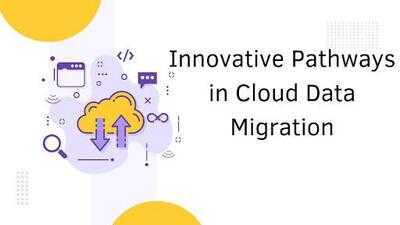

In today's rapidly evolving tech landscape, enterprises embrace innovative methods to streamline their data management strategies. has emerged as a transformative solution, offering enhanced scalability, performance, and cost efficiency. Inspired by the pioneering work of Gopikrishna Yeturi, a seasoned IT professional with deep expertise in cloud transformation and data management, this article delves into breakthrough innovations driving next-generation SAP Business Warehouse (BW) migration to cloud infrastructures. His insights provide a compelling look at how these technological advancements reshape enterprise operations.
Transforming Data Management
The transition from traditional on-premises systems to cloud environments marks a major milestone in enterprise technology. Organizations now move critical data operations to the cloud to utilize flexible resource allocation and advanced automation. This evolution reimagines data processing and delivery, ensuring businesses meet fluctuating demand while maintaining high performance. Integrating cloud-native capabilities with meticulous planning enhances operational continuity, resilience, and the overall efficiency of enterprise systems. This shift fuels innovation.
Harnessing Intelligent Automation
Central to these innovations is a suite of automated tools that streamline migration. Advanced algorithms and artificial intelligence conduct assessments and strategic planning. Automated discovery systems meticulously analyze existing infrastructure to pinpoint potential bottlenecks and determine which critical components require migration. This intelligent automation accelerates transitions while reducing human error risk, ensuring a seamless process that preserves data integrity at every stage. It transforms operations.
Optimizing Performance and Cost Efficiency
A key feature of the migration strategy is its notable impact on performance and cost optimization. The innovative framework uses dynamic resource management to tailor the computing environment to an organization's needs. It scales down resources during low demand to reduce expenses and quickly scales up during peaks to maintain service. Faster query responses and reduced infrastructure costs exemplify the benefits of improved system performance and significant economic savings.
Revolutionizing Data Transfer Techniques
Efficient data transfer is essential for managing vast information volumes. Innovative strategies now address this challenge by employing advanced transfer mechanisms that quickly and securely move even the most extensive datasets. Dedicated network connections and optimized routing protocols maintain high throughput while ensuring data integrity. With parallel upload streams and server-side encryption, enterprises achieve high-speed transfers meeting operational and security demands. This breakthrough minimizes downtime and enhances system reliability throughout migration, proving effective.
Building a Future-Proof Infrastructure
Innovations go beyond migration to optimize cloud infrastructure. Specialized instance types and smart scaling mechanisms ensure a robust, responsive environment that adjusts in real time to fluctuating workloads. This proactive strategy covers compute configuration, memory and I/O management, ensuring optimal efficiency, high availability, operational excellence, and significant cost savings.
Ensuring Continuous Improvement
Migration is only the beginning; post-migration validation and continuous monitoring are essential for lasting performance. A comprehensive testing framework simulates real-world conditions to ensure optimal functionality under load. Automated performance and integration tests proactively identify issues before production impacts, making improvements measurable and sustainable. Continuous monitoring tools track metrics in real time, enabling prompt adjustments that align the system with targets, ensuring migration benefits extend past the initial phase.
Looking Ahead with Confidence
Enterprises navigating digital transformation leverage innovations in cloud data migration by integrating intelligent automation, performance optimization, and robust infrastructure planning. This seamless transition not only overcomes traditional limitations, but also delivers competitive advantage in a digital marketplace, inspiring organizations to harness the full potential of cloud technology for sustainable growth.
In conclusion, Gopikrishna Yeturi's insights underscore the transformative impact of migrating SAP BW to cloud infrastructure. This evolution signifies a significant leap in enterprise data management, harnessing innovative strategies and breakthroughs to enhance efficiency, scalability, and cost-effectiveness. Ultimately, it paves the way for future adaptability and continuous growth for success.